In the world of botany, trees come in an incredible variety of shapes, sizes, and characteristics, each offering its own unique character and benefits to the environment. Among these diverse species, a particularly attractive group are plants decorated with green balls.
From lush foliage to vibrant fruits, these trees have bright green orbs that add vibrancy to landscapes and serve as important components of ecosystems worldwide.
Let’s dive into the enchanting world of these botanical wonders and join me as we embark on a journey to explore the world of 9 trees with green balls.
Different Types of Trees with Green Balls
Chestnut Tree
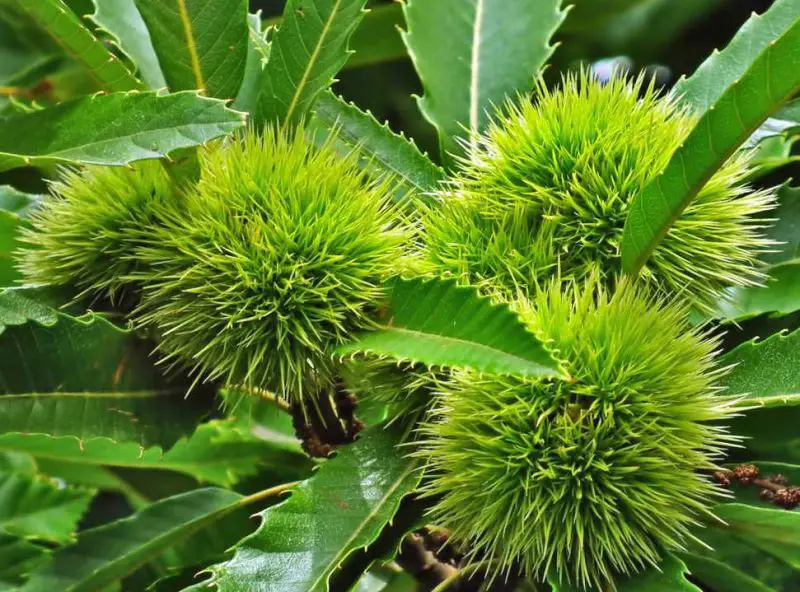
The Chestnut Tree, a majestic deciduous giant, commands attention with its towering height and expansive canopy. Its growing season spans from late spring to early fall, a time of lush foliage and vigorous growth. Adorned with oblong leaves featuring toothed edges, it adds texture and character to any landscape.
Thriving in well-drained soil and under the embrace of full sun to partial shade, the Chestnut Tree finds its niche in various environments. However, it faces challenges from common pests such as gall wasps and chestnut weevils, which may threaten its health and productivity.
The Chestnut tree has green balls decorated with needle-like spikes. Reminiscent of persimmon trees, these green balls reveal shiny, edible chestnuts, a delightful treat that is a favorite during the holiday season. Thus, the Chestnut Tree is not only enchanting but also brings a bountiful harvest, enriching both the landscape and the palate.
Sycamore Tree
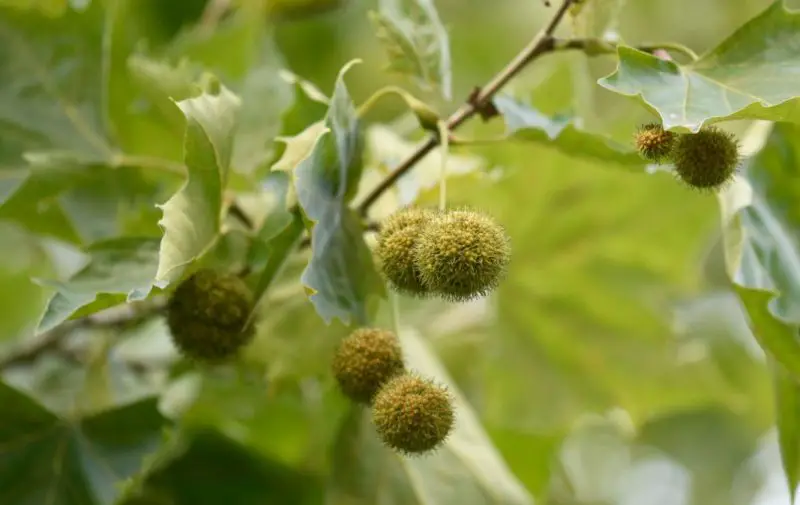
Thriving during spring and summer, the Sycamore Tree stands as a robust emblem of vitality and growth. With its lobed leaves resembling those of a maple tree, it adds a touch of elegance to any landscape it graces.
To flourish, the Sycamore Tree requires moist, well-drained soil and full sun, providing it with the ideal conditions for its rapid growth. However, it must contend with common pests such as aphids and powdery mildew, which may threaten its health.
Easily identifiable by its mottled, exfoliating bark and large, hand-shaped leaves, the Sycamore Tree bears green balls that hang from its branches like ornaments. As these balls dry out, they release seeds carried away by the wind, ensuring the tree’s legacy continues to spread far and wide, enriching the environment with its presence.
Walnut Tree
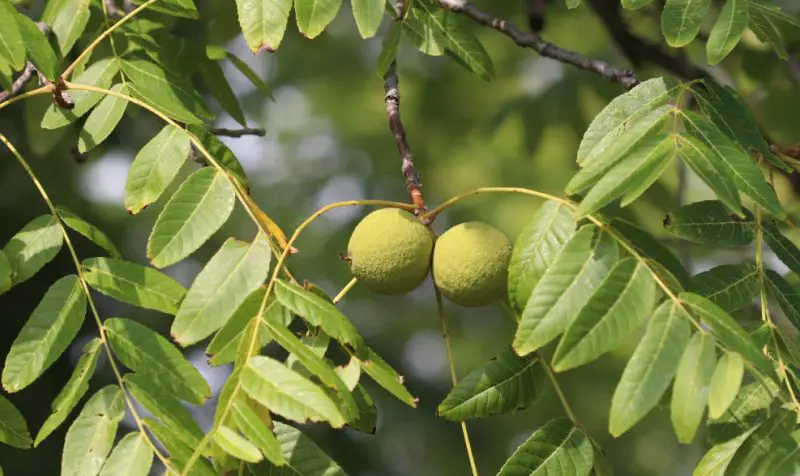
The Walnut Tree, with its growing season stretching from late spring to early fall, stands as a majestic presence in the landscape. Its pinnately compound leaves create a graceful silhouette against the sky, epitomizing its elegance.
To thrive, the Walnut Tree requires deep, well-drained loamy soil and ample sunlight, providing it with the nourishment and energy it needs to flourish. Despite its resilience, it faces challenges from common pests such as walnut husk flies and aphids, which may threaten its yield.
Its green balls, disguised as fruits, encase the valuable walnuts within their green husks, providing a rich source of nutrients. However, its roots release toxins that can inhibit the growth of certain plants, emphasizing the importance of thoughtful placement in the landscape.
Maple Tree
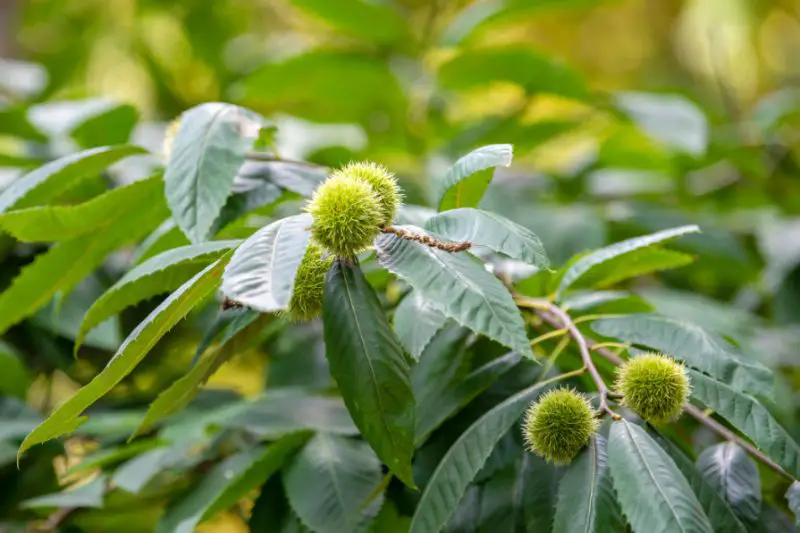
Maple trees, with their growing season extending from spring to fall, are the epitome of versatility and resilience, adapting easily to a variety of climates and soils. Its palm-shaped leaves are decorated with 3 to 9 pointed lobes, creating a picturesque canopy against the sky.
Thriving in well-drained soil and full to partial sun, Maple Trees are a testament to the beauty of nature’s balance. However, it must contend with common pests such as aphids and scale insects, which can pose a threat to its health.
Its small green balls, resembling winged seeds or “helicopters,” spiral gracefully to the ground, serving as both a vital food source for wildlife and a natural phenomenon to observe, enriching the ecosystem with its presence.
American Holly Tree

Thriving primarily in spring, the American Holly Tree stands as a stalwart symbol of year-round beauty in gardens. Its evergreen nature, coupled with spiny margins along its leaves, adds texture and character to any landscape it graces.
To flourish, the American Holly Tree requires acidic, well-drained soil and can thrive in partial shade to full sun, adapting to various growing conditions with ease. However, it must contend with common pests such as leaf miners and spider mites, which may affect its health and appearance.
The American Holly Tree offers a visual feast with its production of green berries, which transition to a vibrant red hue as they mature. These berries, a favorite among birds, add a festive touch to gardens, particularly during the holiday season, enhancing the landscape with their colorful allure. Additionally, the tree’s glossy, spiky leaves stand out as a distinctive feature, further enhancing its beauty and appeal.
Southern Magnolia Tree
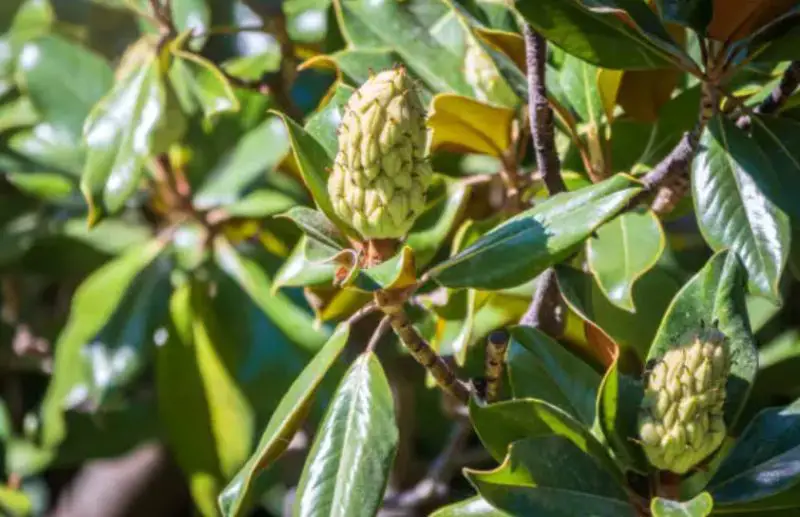
The Southern Magnolia Tree, with its growing season from late spring to early summer, stands as an iconic emblem of the American South, gracing landscapes with its timeless beauty. Its evergreen, oblong leaves provide a lush backdrop year-round, making it a sought-after choice for ornamental and practical landscaping alike.
To thrive, the Southern Magnolia Tree requires moist, acidic soil and thrives in full sun to partial shade, allowing it to flourish in diverse environments. However, it faces challenges from common pests such as scale insects and Magnolia weevils, which may threaten its health.
The Southern Magnolia tree has large, fragrant white flowers and distinctive green, spherical cones that add texture and interest to its appearance. When these cones split open, they reveal bright red seeds, a treat eagerly consumed by wildlife.
Buckeye Tree
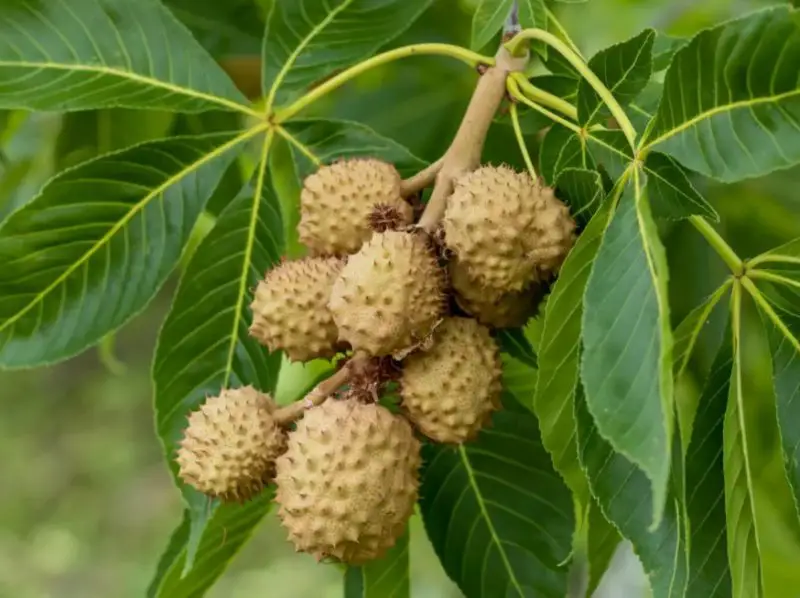
The Buckeye Tree, native to eastern and central North America, stands out with its distinctive features and symbolism. Renowned for its spiky seed balls containing shiny brown seeds, affectionately known as “buckeyes,” it holds a place as a symbol of good luck.
With an average height of 30 to 60 feet, its rounded or oval crown provides shade and adds to its allure. Its palmately compound leaves, with serrated edges and a deep green hue, contribute to its aesthetic appeal.
Thriving in USDA hardiness zones 4 to 7, the Buckeye Tree finds its place in parks, gardens, and urban landscapes, offering not only beauty but also habitat and food for wildlife. While the seeds are not toxic, caution is advised as they are not suitable for human consumption, underscoring the importance of handling them with care.
Osage Orange Tree
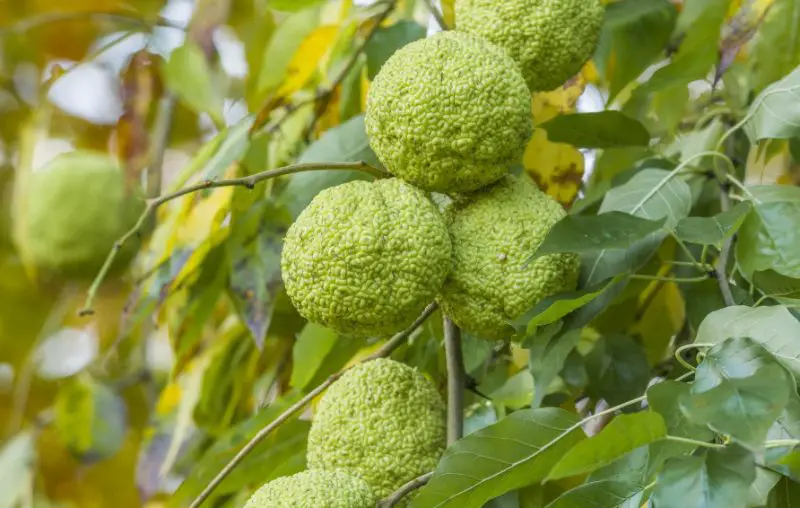
Native to the central United States, the Osage Orange Tree stands as a testament to resilience and endurance. Its growing season, spanning spring, summer, and fall, is a time of vibrant growth and vitality. With leaves shaped alternately and simply, it reaches towards the sun, thriving in open, sunny locations with moist soil.
A defining feature of the Osage Orange Tree is its bright green balls, masquerading as fruit. Though inedible, these waxy-textured orbs mature in late fall, adding a touch of wonder to the landscape. Despite their lack of utility as food, they remain a sight to behold, a symbol of nature’s artistry.
Furthermore, the wood of the Osage Orange Tree holds its own significance. With its distinctively yellow hue, it finds purpose in the craft of furniture making, adding yet another layer to the tree’s multifaceted importance in the ecosystem and human endeavors.
Oak Tree
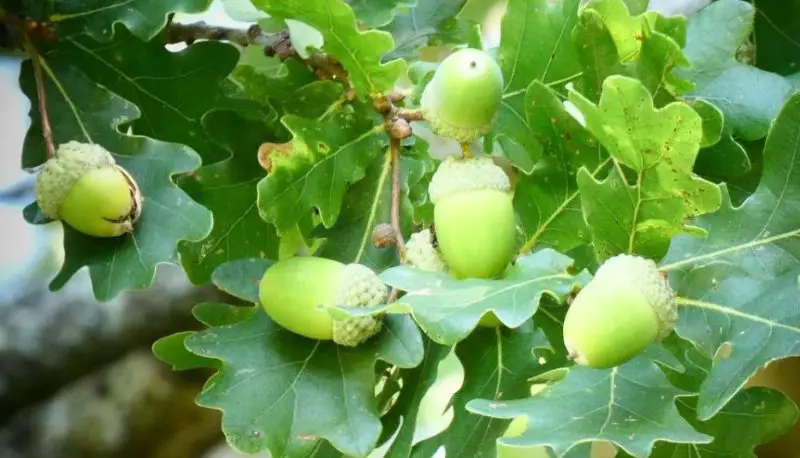
Oak trees, symbols of endurance, are native to diverse regions such as Europe, Africa, and the United States. Their growing season, predominantly in spring, marks a time of renewal and growth. With spiral-shaped, serrated leaves, they adorn landscapes with their distinctive foliage.
Thriving in partial sunlight or complete shade, oak trees have a preference for sandy-rich soil, where they can establish strong roots and flourish. However, they face challenges from common pests like caterpillars, leafrollers, and leafminers, which may attempt to disrupt their growth.
Oak trees are characterized by their lobed leaves and grey bark. While they may lack the vibrant hues of some counterparts, their small green acorns serve as a vital food source for numerous wildlife species, underscoring their significance in the ecosystem.






